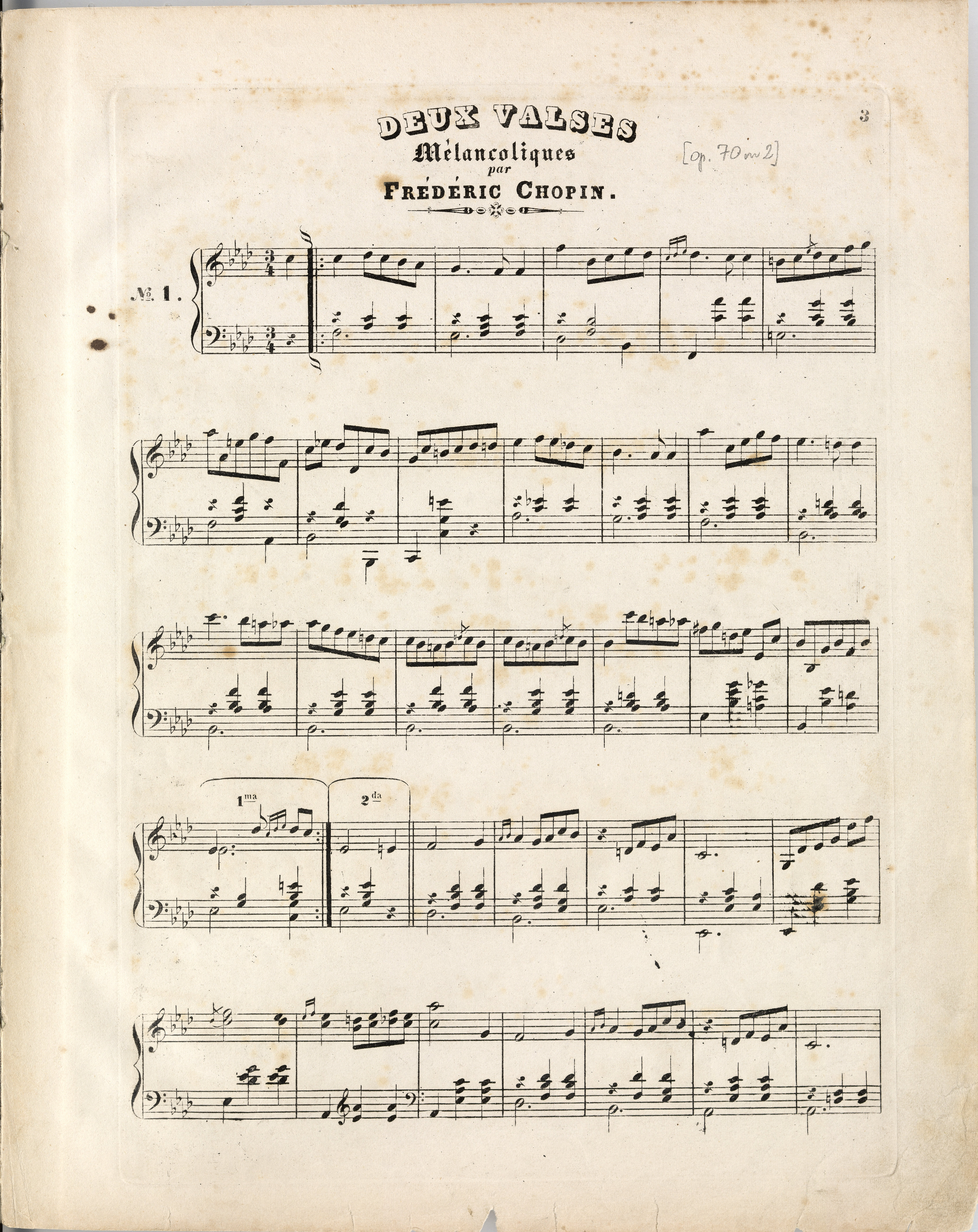Op. 2, Variations in B♭ major
Op. 10, 12 Etudes
Op. 11, Concerto in E minor
Op. 21, Concerto in F minor
Op. 22, Polonaise in E♭ major
Op. 24, 4 Mazurkas
Op. 25, 12 Etudes
Op. 26, 2 Polonaises
Op. 27, 2 Nocturnes
Op. 28, 24 Preludes
Op. 30, 4 Mazurkas
Op. 35, Sonata in B♭ minor
Op. 50, 3 Mazurkas
Op. 63, 3 Mazurkas
Op. 64, 3 Waltzes
(Op. 4), Sonata in C minor




WN 55, Waltz in F minor
PE completed all possible rests in the voices in the L.H.; however, the general text overlaps with FEF and GEF. It results only from the editor's aim to precisely write out and to order, in terms of rhythm, multiple parts in the L.H. In further annotations, concerning the occurrence of this type of rests, we consider all those sources jointly and we display the more transparent version, without rests, by default (generally the graphic version of FEF and/or GEF).
Another common revision in the F sources is prolonging the rhythmic value of the 1st beat in the L.H. - to a minim (most often in #CF) or a dotted minim (PE, FEF and GEF). In the majority of the cases, it is an editorial revision. In the case when the extension of the 1st beat applies to the version of F only, we do not include variants with miniatures. An exception are the situations in which the 2nd and 3rd beats of the bar in F are different than in the remaining sources and when the prolonged 1st beat is confirmed by other sources - in such situations we make it possible to change the rhythmic variant of the 1st beat in the L.H.
Compare the passage in the sources »
category imprint: Differences between sources; Source & stylistic information
notation: Rhythm

